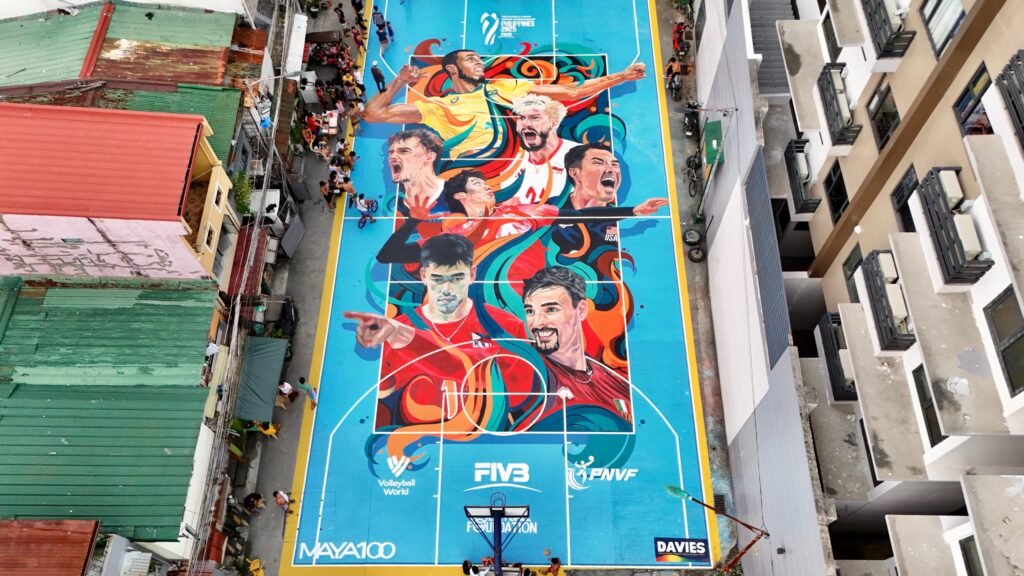Collaboration, Technology, and Youth: Inside Fabio Azevedo’s Plan to Elevate Volleyball
September 25, 2025
With over half of volleyball’s global fan base rooted in Asia, the continent has become the beating heart of the sport’s growth strategy. Leading this charge is Fabio Azevedo, President of the Fédération Internationale de Volleyball (FIVB), whose vision is to double the sport’s global reach to 1.6 billion people by 2032. From grassroots initiatives in India with Olympic champion Abhinav Bindra to groundbreaking fan engagement in Manila, Azevedo is driving a movement that positions volleyball as not just a sport, but a way of life built on collaboration, inclusivity, and innovation.
In this exclusive conversation with iSportConnect’s Taruka Srivastav, Azevedo reflects on FIVB’s ambitions in Asia, the evolution of the Global Volleyball Movement, the role of technology and fan engagement, and the opportunities shaping volleyball’s future across the Middle East and beyond.
Fabio, thank you for your time. You’ve been in India and now in Manila—what has been the purpose of your recent visits to Asia?
Asia is the most important fan base of volleyball in the world. Around 52% of our fans are based here, and Asia accounts for about 60% of the Volleyball Nations League audience. To put it in perspective, out of eight World Championships this year—including beach, indoor, and age-level competitions—seven were held in Asia. Just as the Americas are the home of basketball and Europe is the home of football, Asia is truly the land of volleyball.
You recently visited India and met dignitaries such as Abhinav Bindra. What came out of that trip?
ndia is one of our key strategic markets alongside China and the USA. We have a clear vision to double volleyball’s global audience from 800 million today to 1.6 billion by 2032. That means making the sport more accessible, affordable, and understandable.
Abhinav Bindra is a remarkable partner. Through his foundation, we launched the Udaan School Volleyball Programme, reaching over 120 schools and thousands of children. We are also working on four major projects in India, including the Brahmaputra Volleyball League in Assam, grassroots initiatives in Odisha, collaborations with Reliance Foundation, and now the partnership with the Abhinav Bindra Foundation.
Our ambition is to see India competing at the World Championships and Olympic Games soon. For example, Abhinav and I discussed fast-tracking a beach volleyball team so that two Indian athletes could potentially compete in the LA 2028 or Brisbane 2032 Olympics. With a country of 1.5 billion people, there’s no reason India cannot produce elite volleyball athletes.
You often talk about the Global Volleyball Movement. What does this mean?
Traditionally, international federations regulate the sport and run competitions. But we want to go further—every action that keeps a ball in the air should be considered volleyball. Whether kids are playing with a balloon, a paper ball, or a giant one-meter ball, it counts.
Our mission is to make volleyball relevant in everyday life—promoting health, fun, and values like collaboration. Volleyball is unique: six people share just nine square meters, you can only touch the ball once, and teamwork is non-negotiable. That spirit of collaboration is exactly what the world needs today.
Many sports are moving toward shorter, entertainment-focused formats to attract Gen Z. Does FIVB have similar plans?
Absolutely. Fan engagement is at the center of our decisions. Volleyball already has a natural advantage: 180 points per match, which means 180 built-in intervals for engagement. In Manila and Thailand, fans experienced new presentation styles, music, and interaction that were hugely successful.
Beyond that, we support all forms of play that keep the ball in the air—whether it’s formal leagues or casual street play. For us, the future lies in inspiring new fans, especially young people, through fast, exciting, and social-media-friendly formats.

How is FIVB integrating technology and innovation into the sport?
Technology plays a key role in protecting the integrity of the game and improving fan engagement. Ten years ago, we launched the Volleyball Challenge System to allow players to contest referee decisions. Now we’ve introduced Boimbo Wout, which provides instant, automated line calls in real time, displayed on giant screens for athletes and fans.
Looking ahead, we are investing heavily in AI-driven data capture and video analytics. This will provide real-time statistics for coaches, athletes, and fans. We are currently in phase three of development and expect to launch this platform next year.
Commercial partnerships are vital. What kind of interest are you seeing from sponsors, and what do you look for in partners?
We have both global and regional partners. Volleyball is one of the most gender-equal sports in the world—same prize money, same visibility, and in some countries, women even earn more than men. This makes us highly attractive for brands aligned with women’s empowerment and equality.
We also seek partners who embrace innovation and new ways of communication. For example, in Japan, the manga Haikyuu!! has become a global cultural phenomenon and a gateway for young fans into volleyball. Our sponsors are excited about tapping into this mix of sport, culture, and storytelling.
The Volleyball Nations League and World Championships continue to grow. How are you making these elite competitions stronger?
The Volleyball Nations League (VNL) is our annual flagship, while the World Championships, held every two years, crown the best in the world. Both are central to our strategy. We are modernizing the VNL to make it more innovative and attractive to young fans, while positioning the World Championships as the pinnacle event after the Olympic Games.
Beach volleyball is also a priority. It’s always a huge success at the Olympics—Paris 2024 was spectacular at the Eiffel Tower. Now, we want to elevate beach volleyball across the full four-year cycle, not just during the Games.
Finally, the Middle East is investing heavily in sports. What role does volleyball have in this region?
The Middle East is about opportunities, not just money. Last year, we held an under-20 beach volleyball tournament in Qatar with eight participating nations. For many athletes, it was their first time playing internationally. The impact was enormous—cultural, social, and sporting.
We are currently in discussions with leaders in Qatar and Saudi Arabia to host more major events. With the FIFA World Cup in the region and the 2030 Asian Games in Qatar, we see the Middle East as a major growth area. Volleyball will be part of that story.

